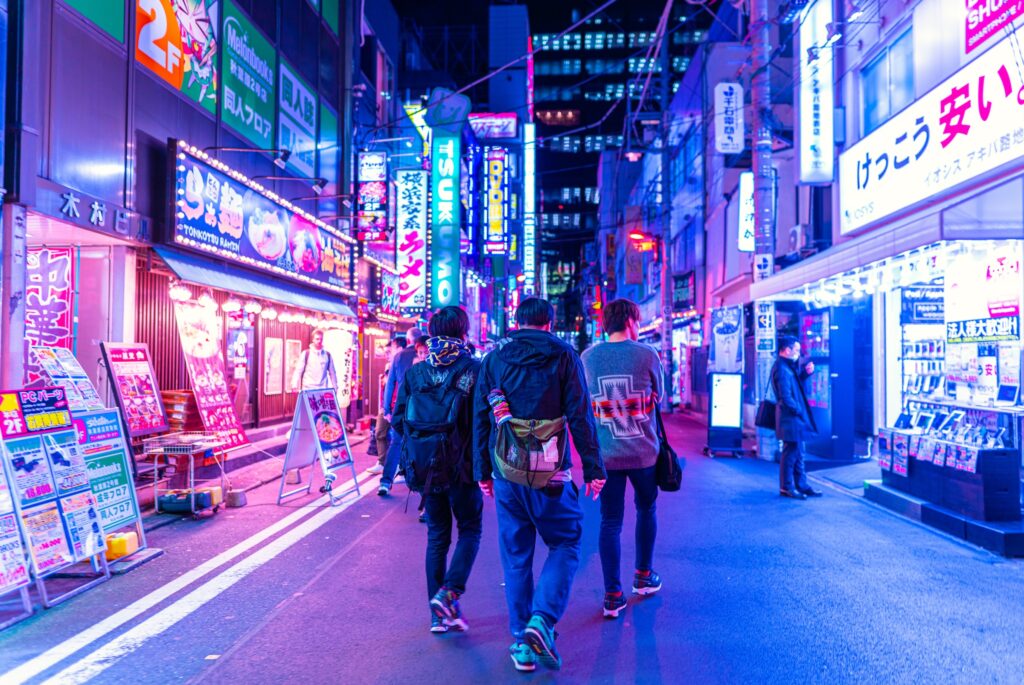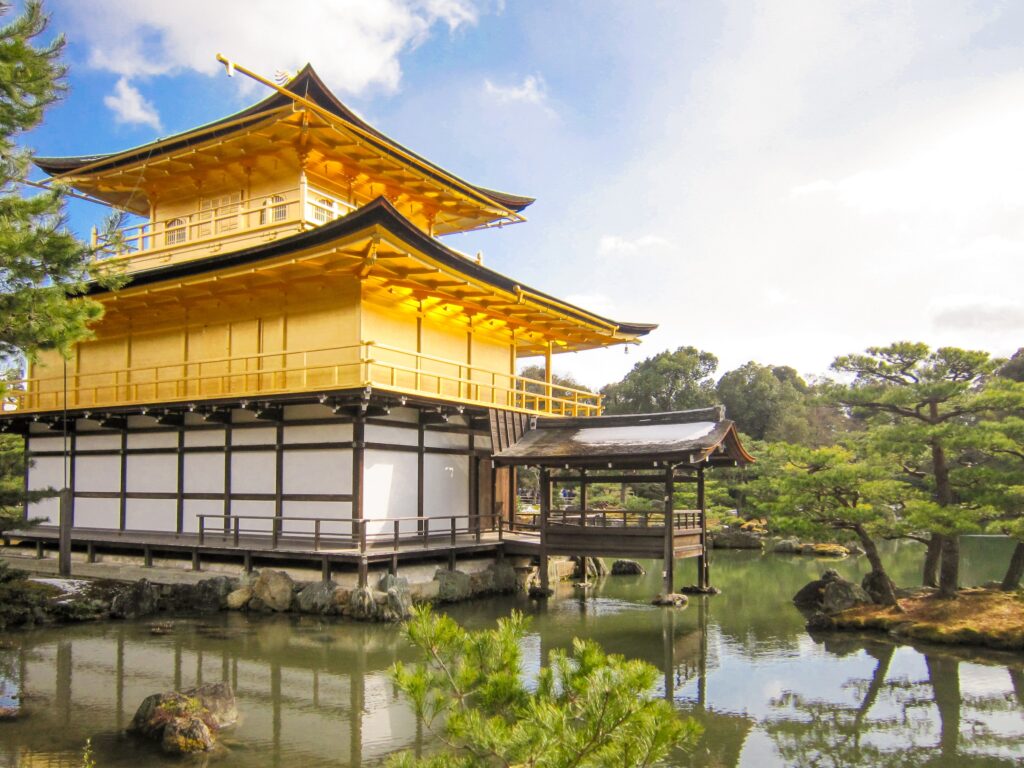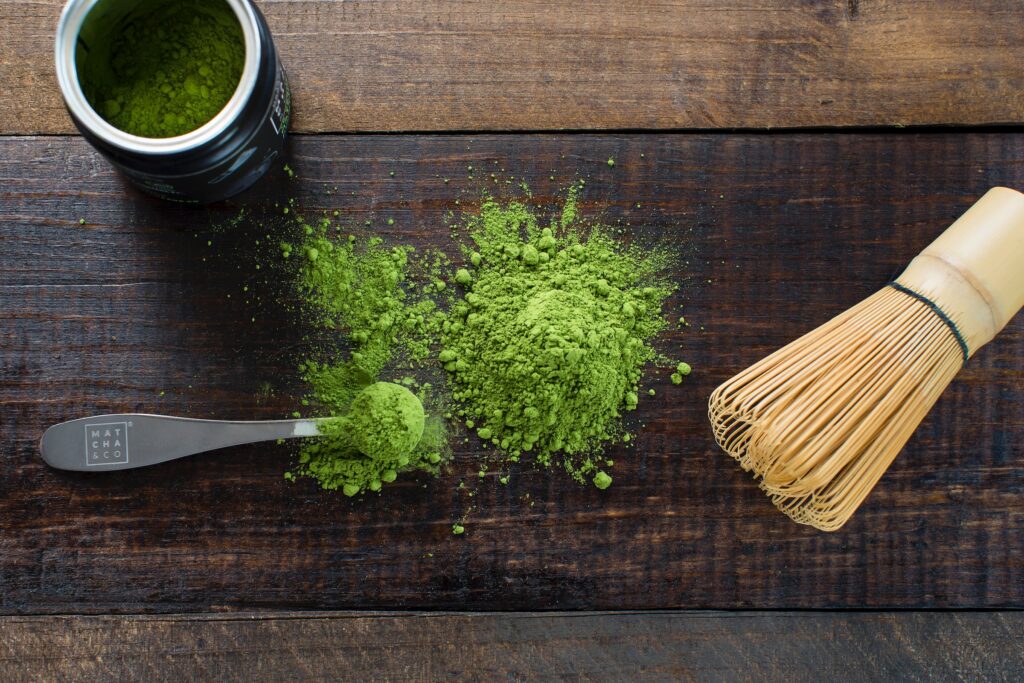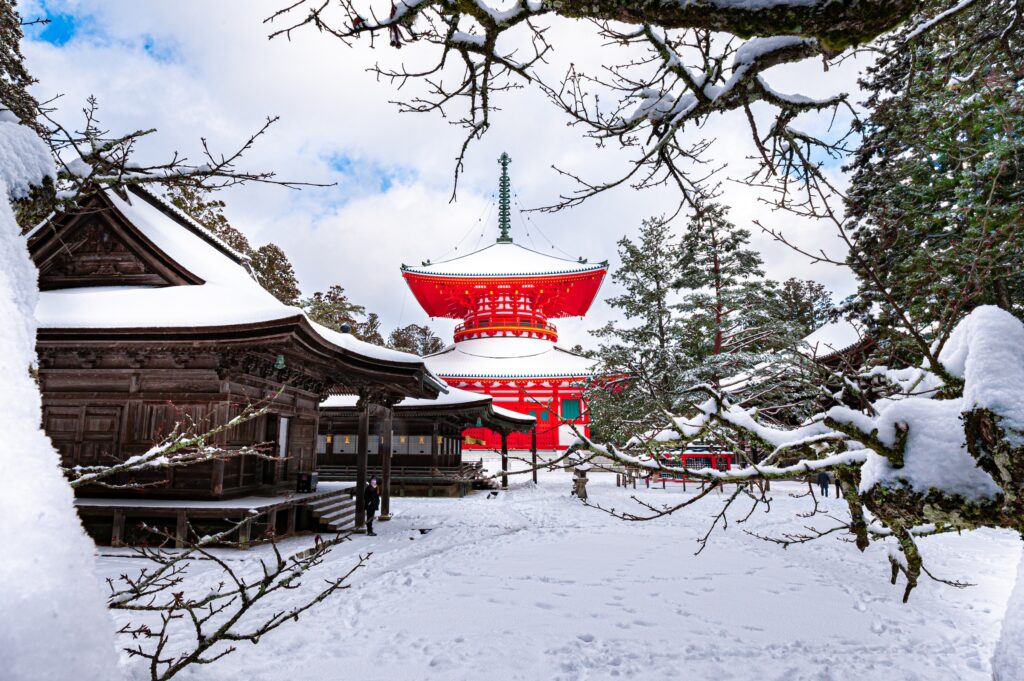Japan is a country of contrasts, where centuries-old traditions exist alongside cutting-edge technology, and modernity blends with ancient culture. Its rich and diverse history has crafted a unique identity that intrigues and fascinates visitors from across the world. As a tourist, it is essential to understand its culture to better appreciate the Japanese way of life. In this blog, we will explore the traditional and modern customs of Japan, providing you with insights to make your visit to this captivating country unforgettable.
Get to know Japanese culture – explore traditional and modern customs
Traditional Customs:
One of the most striking features of Japanese culture is its emphasis on tradition, which has been passed down for generations. From tea ceremonies to the art of flower arrangements, traditional customs are ingrained in the everyday life of the Japanese people. One of Japan’s most iconic symbols is the kimono, a long, flowing robe that represents elegance, grace, and beauty. Visitors can immerse themselves in this timeless garment at the Kyoto Kimono Rental Wargo shop, where they can rent a kimono and walk around the ancient city of Kyoto. Another must-try experience is the traditional Onsen (hot spring bath), a Japanese bathing ritual that rejuvenates both mind and body. There are many Onsen facilities throughout Japan that give visitors a glimpse into the ancient customs of the Japanese people.
Food Culture
Food is an integral part of Japanese culture, and it is said that the Japanese have perfected the art of umami (the taste that defines savory flavors). From sushi to ramen, Japanese cuisine is world-renowned for its freshness, quality, and presentation. One traditional Japanese food you should try is Soba noodles, a thin and chewy type of noodle made from buckwheat flour. Soba noodles are usually served in a hot broth or cold with dipping sauce and can be found in most restaurants or food markets throughout Japan. Another must-try is the Japanese tea ceremony, which is more than just a drink – it is an art form. The ceremony involves preparing and drinking tea with a skilled tea master, who teaches the importance of mindfulness and etiquette.
Pop culture

Photo Credits: Jezael Melgoza
Japan is also famous for its vibrant and unique pop culture, which has captivated audiences worldwide. From anime to manga, Japan’s pop culture scene is a blend of traditional and modern elements. The Harajuku neighborhood in Tokyo is a perfect example of this blend, where traditional Japanese architecture meets contemporary fashion. It’s a place where anything goes, and you will see many colorful and quirky outfits. Another famous destination in Tokyo for pop culture is the Akihabara district, also known as “Electric town.” This neighborhood is the epicenter of Japanese electronics, anime, and manga, and visitors can indulge in all kinds of pop culture merchandise here.
Festivals
Japan is home to some of the most colorful, vibrant, and exciting festivals in the world. The most well-known festival is the Cherry Blossom Festival (Sakura Matsuri), which takes place in late March to early April, where cherry blossoms bloom all across the country, and people celebrate with picnics and parties under the trees. Another stunning festival is the Gion Matsuri, held in Kyoto in July, is a month-long celebration featuring traditional parades, food, and music. Visitors can also witness the Kanda Matsuri in Tokyo, a festival that honors the Shinto deity, and the Awa Odori festival in Tokushima, where thousands of dancers take to the streets in a colorful, rhythmic dance.
Discover the hidden gems of Japan – discover small towns and villages away from the hustle and bustle
Shirakawa-go – The Hidden Gem of Snowy Peaks
Shirakawa-go is a picturesque mountain village located in the Gifu Prefecture, known for its remarkable gassho-zukuri farmhouses, traditional Japanese architecture with steep thatched roofs that resemble hands in prayer. The village is surrounded by snow-capped mountains, with a unique atmosphere that changes with the seasons, from cherry blossoms and green hillside farms to snow-covered roofs, offering many outdoor activities like snowshoeing, snowboarding, and hiking throughout the year. Experience the village’s magic by staying in one of the gassho-zukuri farmhouses turned into guesthouses, allowing visitors to enjoy authentic Japanese hospitality and culture.
Kinosaki Onsen – Hidden Hot Springs Town
Kinosaki Onsen is a hidden hot springs town located on the northern coast of Hyogo Prefecture, famous for its traditional architecture, beautiful willow trees, and seven public hot springs baths (soto-yu), each with its unique healing properties. Walk in wooden clogs (geta) and a yukata (Japanese robe) in the streets, dine in one of the local restaurants with fresh seafood, and enjoy an authentic Onsen experience, soaking in the hot springs from late afternoon to nightfall, a Japanese ritual believed to relax and refresh the body.
Omote Sando – Hidden Shopping Street
Omote Sando is a hidden shopping street located between Ginkaku-ji Temple and the Philosopher’s Walk in Kyoto known for its stylish cafes, fashionable boutiques, and unique shops designed by leading architects. It’s a quiet pedestrian street lined with trees perfect for a leisurely stroll, and it’s a great place to escape from the crowds of Kyoto’s more famous sites, experience some local shopping, and enjoy the elegant design. Browsing and window-shopping are free, though store prices can be expensive.
Koya-san – Hidden Buddhist Monastery
Koya-san is a hidden Buddhist monastery located in the mountains of Wakayama Prefecture, considered one of the holiest places in Japan. This UNESCO World Heritage Site is a secluded mountain town, with over 100 temple lodgings guests can stay in, participate in the daily prayer services, walking meditation (shojin-ryori), and learn about Zen philosophy. Koya-san is also rich in nature, hiking trails, and panoramic views of the surrounding forests.
Tottori Sand Dunes – Hidden Desert Oasis
Tottori Sand Dunes are a hidden desert oasis located in Tottori Prefecture, Japan’s only desert, stretching 16 kilometers of coastline, with rolling sand dunes up to 90 meters high. The dunes’ beauty is breathtaking, especially during sunset when the light filters through the sandy air, giving off a warm glow. Visitors can enjoy stunning views of the Sea of Japan and the dunes from the Kaniru Observatory Deck, hop on a camel ride or try their hand at sandboarding.
Explore the country’s landmarks – visit iconic sites like Tokyo Tower, Mount Fuji, and more
Tokyo Tower: Tokyo’s iconic landmark
No trip to Japan is complete without a visit to Tokyo Tower. Standing at 1,092 feet, this iconic red and white tower is one of the most recognized landmarks in Japan. You can take an elevator or climb the stairs to the top, where you’ll be rewarded with stunning panoramic views of Tokyo. The tower is particularly mesmerizing at night when it’s illuminated by lights, making it a perfect spot for romantic dates, photo sessions or just to enjoy the views.
Mount Fuji: The natural wonder of Japan
Mount Fuji is Japan’s highest mountain at 12,388 feet. A dormant volcano located about 100 kilometers southwest of Tokyo, it’s a must-visit destination for nature lovers and adventure seekers alike. You can climb the mountain during July and August when it’s open to the public. The climb can be challenging, but it’s definitely worth the effort. The view from the top is truly breathtaking– with rolling clouds and beautiful landscapes. For those who want to take the easy way up, a bus tour from Tokyo will give you panoramic views of the mountain while taking you through the scenic countryside.
Golden Pavilion: Kyoto’s jewel

Photo Credits: KWON JUNHO
The Golden Pavilion, also known as Kinkaku-ji, is a Zen temple located in Kyoto, Japan’s old capital. The temple is known for its stunning architecture, with the upper two floors covered in gold leaf. The surrounding garden and pond provide a perfect setting for photography and a serene atmosphere, making it a must-visit destination in Kyoto.
Fushimi Inari Shrine: An other-worldly experience
Another famous landmark in Kyoto is the Fushimi Inari Shrine, which is dedicated to the Shinto god of rice, Inari. The shrine features over 10,000 torii gates, making it one of the most photographed shrines in Japan. Walking through the gates, the environment, the sounds, and the solemn atmosphere make you feel like you’re in a completely different world.
Hiroshima Peace Memorial Park: A poignant reminder
The Hiroshima Peace Memorial Park is a must-visit destination in Japan for those who want to learn more about the country’s history with regards to World War II. The park was built to commemorate the victims of the atomic bombing of Hiroshima and serves as a symbol of peace. You can visit many of the exhibits and museums dedicated to the history of the bombing and its aftermath. It’s a haunting yet essential experience for both Japanese citizens and international visitors alike.
Sample local cuisine – savor some of Japan’s signature dishes such as ramen or teppanyaki
Ramen’s roots can be traced back to China, but today, it has become a quintessential Japanese dish that can be found virtually everywhere in the country. A staple food among college students, busy office workers, and food connoisseurs alike, what truly makes Japanese ramen unique is the myriad of regional variations. For example, Tokyo-style ramen often features a clear, soy sauce-based broth with thin, wavy noodles, while Hakata-style ramen boasts a rich, creamy pork bone broth with thin, straight noodles. Whether you like your broth to be savory or spicy, your noodles thick or thin, there’s a ramen for everyone in Japan.
Teppanyaki, on the other hand, is a type of Japanese cuisine that emphasizes cooking fresh, high-quality ingredients on a large steel plate. The chef at the restaurant usually performs their craft right in front of the diners, using a variety of cooking techniques such as grilling, sautéing, and frying to create mouth-watering dishes. You can choose from chicken, beef, seafood, or even vegetables, and watch as the chef prepares your meal right before your eyes. Teppanyaki is also a favorite among tourists and locals alike, and you can find a range of restaurants offering the dish all over Japan.
Another must-try Japanese dish is Sushi, which is undoubtedly one of the country’s most iconic culinary export. Sushi is made by combining rice and a variety of seafood, from raw fish to crab and shrimp. Sushi production is taken very seriously in Japan, with chefs often undergoing rigorous apprenticeships and training to hone their skills. Depending on your preference, you can choose from different sushi styles, such as nigiri, hand-rolled maki, or even inari. Keep in mind that sushi can be quite expensive, especially at high-end restaurants. However, if you’re on a budget, you can still enjoy some great sushi at cheaper conveyor belt sushi places.
If you’re looking for a unique and unusual snack, then Takoyaki is the dish for you. Takoyaki is essentially a ball-shaped snack made with wheat flour batter, diced octopus, and a range of savory toppings. The dough is cooked on a griddle or in a special mold, resulting in small, piping hot balls that are crispy on the outside and creamy on the inside. Takoyaki is traditionally served with a sweet soy sauce and mayonnaise, making it a popular street food snack in Japan.

Photo Credits: Matcha & CO
Finally, no trip to Japan is complete without trying its famous matcha tea. Matcha is a finely powdered green tea that is used in a range of traditional Japanese dishes, from tea ceremonies to sweets and even savory dishes. The tea is made from shade-grown leaves, which are then ground into a fine powder. Matcha has a distinct, grassy flavor with a slightly bitter aftertaste, but it’s also packed with antioxidants, making it a healthy choice. You can enjoy matcha in various forms in Japan, such as in a cup of tea, ice cream, or even in chocolate.
Explore the countryside – take a relaxing stroll through rural areas with beautiful scenery and hot springs
Choosing the Right Destination
When it comes to exploring the Japanese countryside, there are countless destinations to choose from. To make the most of your experience, it’s essential to decide what kind of scenery you want to immerse yourself in. If you’re looking to escape the city’s hustle and bustle but still want to be near cultural attractions, Kyoto and Kanazawa are excellent choices. For those looking for a more rugged adventure, Hokkaido’s pristine wilderness is the perfect pick. One of the most popular destinations, however, is the iconic Hakone. This peaceful mountain area offers the perfect blend of scenic beauty and hot springs relaxation.
Soothing Your Mind and Body
One reason why Japan’s countryside is so appealing is the abundance of hot springs. Known as “onsen,” these geothermal springs provide natural relief for all kinds of ailments. Whether you’re looking to ease stress or soothe any aches and pains, a refreshing dip in the warm waters is the perfect way to recharge. Hakone, in particular, is renowned for its high-quality hot springs. With a range of public and private baths to choose from, you can tailor your experience to your preferences and find the perfect way to unwind.
Exploring the Countryside
Once you’ve found your ideal destination and satisfied your hot spring cravings, it’s time to explore the countryside. With stunning natural scenery, charming villages, and breathtaking views, the Japanese countryside is a photographer’s dream. Make sure you pack comfortable shoes and clothing as some areas require a bit of hiking. Whether you’re exploring by bike, on foot or by car, there are plenty of adventures to be had.
Where to Stay
To make the most of your countryside adventure, it’s essential to choose the right accommodation. From traditional Japanese inns (ryokans) to cosmopolitan hotels, there’s something for every taste and budget. Staying in a ryokan is a unique experience, making you feel like an authentic part of Japanese rural culture. With traditional tatami mats, futon bedding, and local food, you can fully embrace the countryside ambiance. If you’re looking for a luxurious escape, many of the high-end hotels offer exceptional service and facilities, all with stunning views.
The Best Time to Visit
Whenever you choose to visit the Japanese countryside, there is always something to see and enjoy. However, the best time depends on your preferences. Springtime (late March to early June) is cherry blossom season, which is a spectacular sight to see. Summer (June to early September) is perfect for outdoor adventures, and with school vacations, it can get quite busy. Autumn (October to December) is when the trees turn into beautiful shades of red and orange and is an excellent season for hikers. Finally, winter (December to February) offers a unique chance to experience Japan’s majestic countryside dusted in snow.

Photo Credits: Samuel Brenner
Japan is a country that will captivate you with its rich culture and history, from traditional customs to modern pop culture. By understanding and immersing yourself in its customs, you can better appreciate the Japanese way of life. This blog has provided a glimpse into some of the many experiences Japan has to offer. Whether you’re a foodie, anime fan, or history buff, Japan has something for everyone. So come and explore the fascinating culture of Japan and make memories that will last a lifetime.
Photo credits: Manuel Cosentino

Explore the Land of the Rising Sun – Best Tours and Destinations in Japan